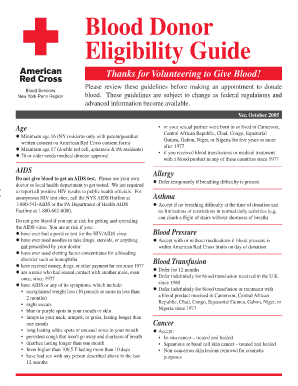
Other health and travel questions are reviewed with each donor in detail. People who are taking “blood thinners” or certain drugs that are used to treat acne, baldness, an enlarged prostate, or some other conditions may not be able to donate unless they’ve stopped the drug for a certain amount of time.

If you’re healthy, you can donate a unit (about a pint) of blood without harm because one unit is a small part of your total blood volume. Reactions from donating are rare and are almost always minor if they do happen. Donors cannot get hepatitis, HIV, or any other infections or diseases from giving blood. The needle used to draw blood from your vein has never been used before, and it’s thrown away right after it’s used. Only sterile equipment is used to collect blood. People are not allowed to donate blood if their lab tests or questionnaires show that they may be at high risk for certain diseases. Lab tests are done to look for blood that might transmit diseases (described in Getting a Blood Transfusion). Also, previous donation records and lists of ineligible donors are checked. Everyone who comes in to donate is asked many questions and has a chance to say whether their blood may be unsafe for any reason.

In the United States, all blood centers follow careful procedures to keep the blood supply safe. The AABB (formerly the American Association of Blood Banks) also publishes guidelines for safe transfusions, which its members must follow. The US Food and Drug Administration (FDA) closely regulates blood to keep the blood supply safe. After blood is tested for safety and processed into components, it’s stored in blood banks until needed. Some larger hospitals have their own centers to collect and process donated blood. Some centers use vans (often called bloodmobiles) that travel to different areas to collect blood. Blood is usually donated at special collection centers.


 0 kommentar(er)
0 kommentar(er)
